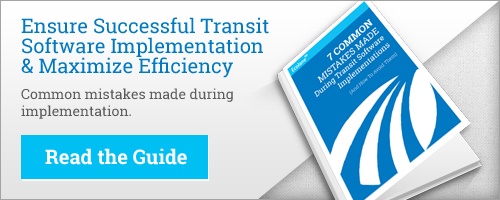Transit in America is ever-evolving and has come a long way in recent years. However, there is still a stigma associated with public transit, and it is a stigma that is undeserved, especially with recent advances made in public transit.
So, where does this stigma originate from, and what can be done to overcome it? A large portion of the public is under the impression that public transportation is only utilized by those that have no choice; namely low-income individuals or communities that can’t afford any other mode of transportation and that these modes of transportation are poorly cared for. This assumption leads to a stigma that is hard for public transportation, specifically buses, to overcome.
In order to increase ridership and overcome this stigma, there are some things that can be done. The main question is; how can we get “choice-riders”, or those that do not have to use public transit, to choose public transportation anyway?
There are many opinions on the matter, but one of the most popular arguments is to make buses more like trains to increase ridership.
Because trains are seen as more “modern and sleek”, route maps for trains are often more easily understood by riders than bus schedules, and the process is quicker and there is no traffic, trains are less stigmatized than buses.
If buses can adopt more of these qualities by addressing some of the top complaints, such as slow boarding times and the need to sit in traffic with all other vehicles, then the stigma may be reversed. For example, giving buses signal priority and giving them their own right of way, like trains, can make a huge difference for travel times. Collecting fares previous to boarding can also help speed up the process as well. The proper transit software can also help address schedule and routing issues to improve performance.
But these changes require money, and this is where the problem re-presents itself; if the general public has a stigma attached to buses, will they be willing to put money towards improving them?
There are some ideas that could help to eliminate the stigma of buses and other modes of public transportation to gain support from the general public and eventually increase funding, but it will take time. Some ideas are:
- Stigmatizing modes of transportation involving high Co2 emissions per passenger, such as individual automobiles.
- Involving celebrities or other public figures in campaigns encouraging the use of public transport. They should actually use public transport themselves and be shown in the media doing so.
- Finding ways to increase the value of public transportation in comparison to private modes through quality of travel, convenience, and customer service. Public transportation needs to be able to compete with private transportation on all levels.
- In kind benefits should include bus and rail allowances rather than additional new cars.
Working with transit agencies every day, Ecolane knows that this stigma has no merit as buses are improving rider experience, scheduling and dispatching, and customer service every day. It’s a matter of having the right tools and processes in place in order to accomplish high levels of service, and getting the public to reap the benefits that these tools and processes offer. Stigmatized public transportation is a thing of the past, and Ecolane believes that we can overcome any doubt through upgrading and optimizing public transit through transit software.
About the Author

Ecolane
Read Ecolane's blog articles for perspective, opinion and information on transit and paratransit issues.
%20(200%20x%20100%20px).png)

